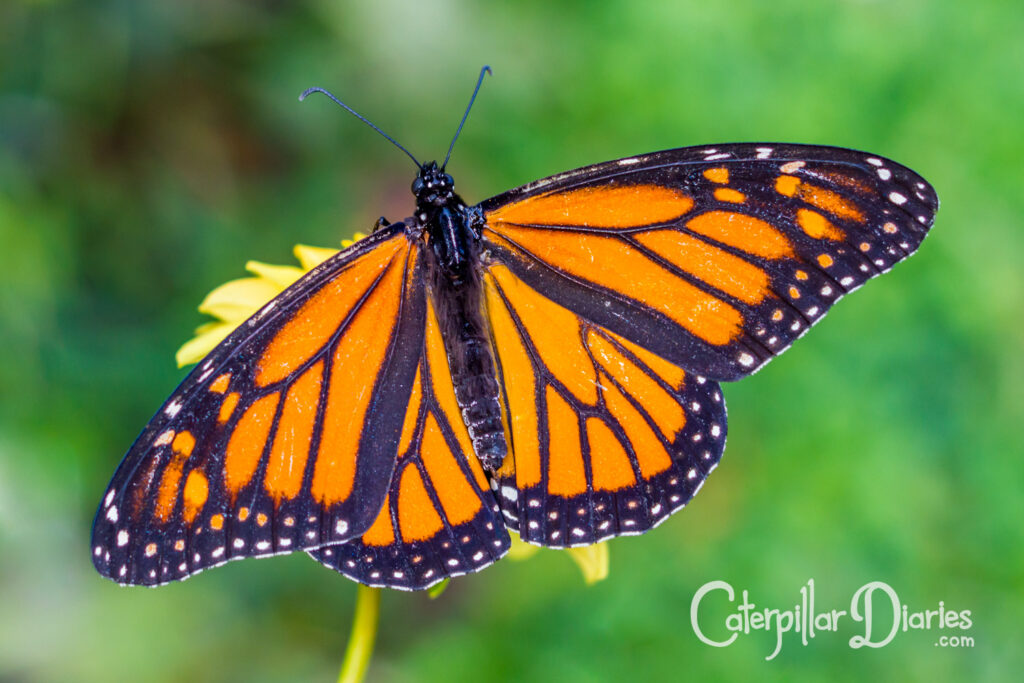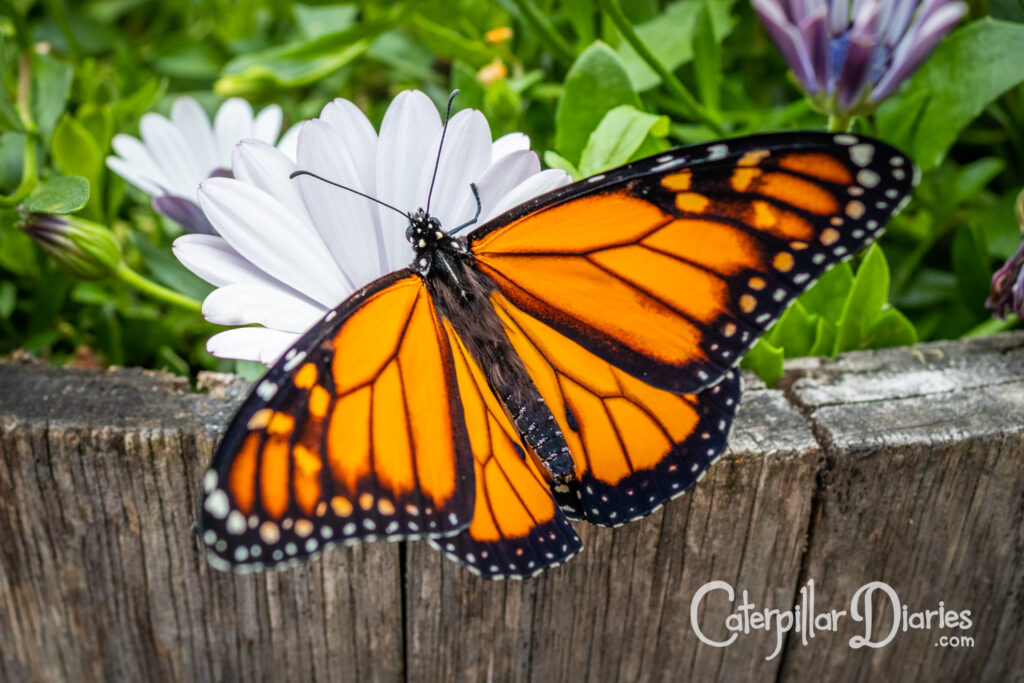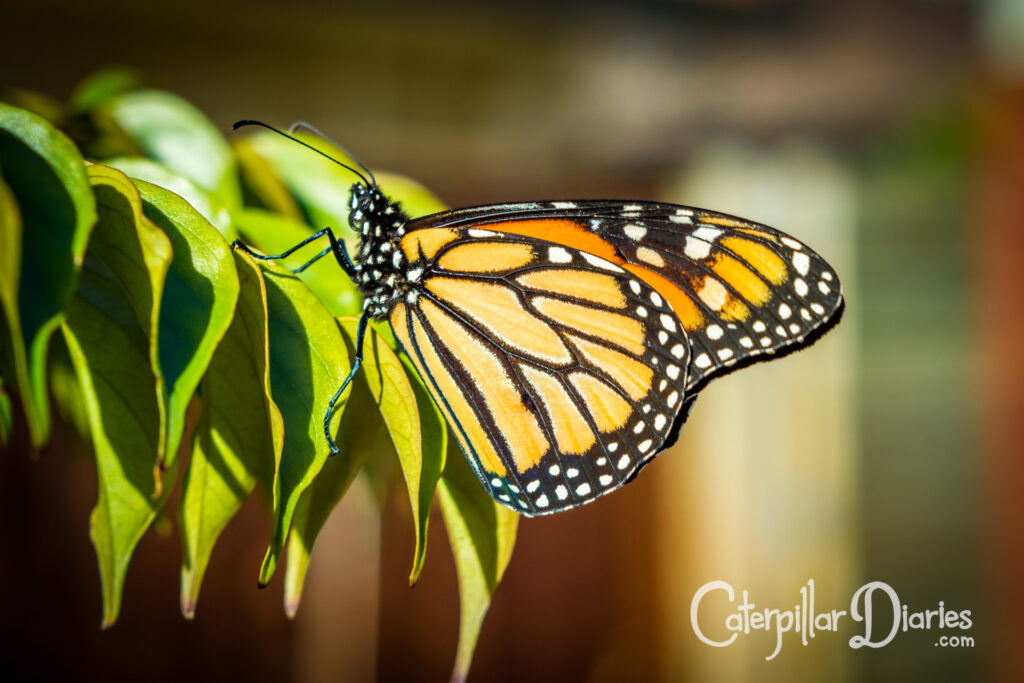
The butterfly is the adult in the monarch’s life cycle. A monarch butterfly has black and orange wings, with white dots along the edges. The female has thicker lines (or veins) on her wings, while the male has thinner lines (veins) and two black spots on his hindwings .

While the caterpillars eat leaves, the butterflies eat nectar from flowers, which they suck up using their straw-like tongue (proboscis). Their proboscis is kept coiled up when not in use, but to drink, they unroll it and tap around at the base of the flower until they find the tasty nectar.
Monarch butterflies that emerge from their chrysalis (eclose) in the spring and summer live for two to six weeks before they die of “old age”. In that time, they will mate so the female can lay eggs and start the cycle again.
However, the butterflies that elcose in the autumn (or late summer in cooler climates) do not mate until the following spring. Instead, they spend the winter in trees with a large group of butterflies, protecting themselves from the cold and sunning themselves on warm days. These butterflies live for about five months.

In the USA and some other countries, the overwintering butterflies migrate to a warmer climate and return in the spring before the weather gets too hot. Butterflies from the USA migrate in their millions to Mexico and the southern states of the US.
However, as New Zealand has a temperate climate (neither too cold nor too hot for monarchs), the butterflies usually stay in the same region through the winter, congregating in their hundreds on favourite trees.
